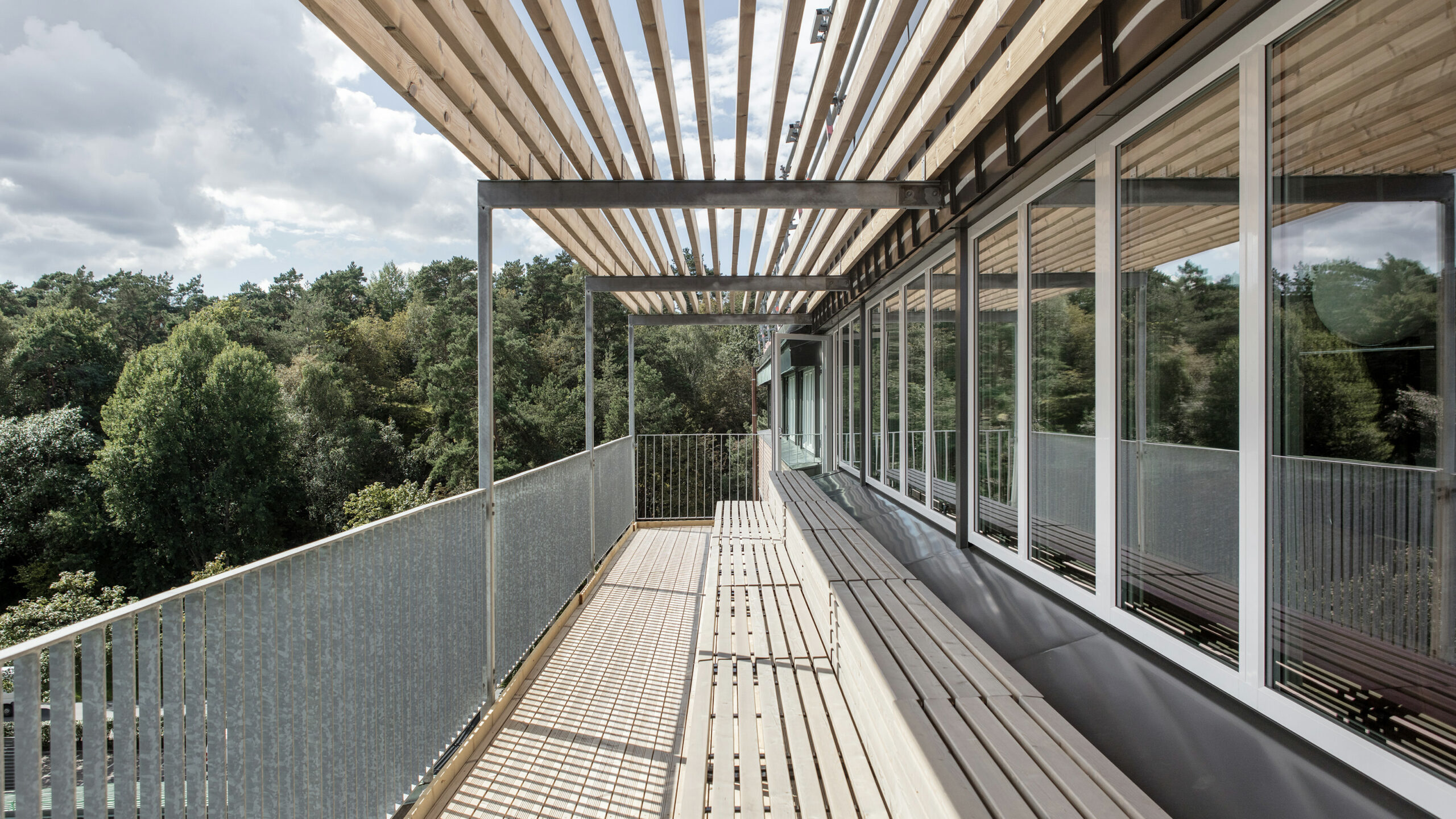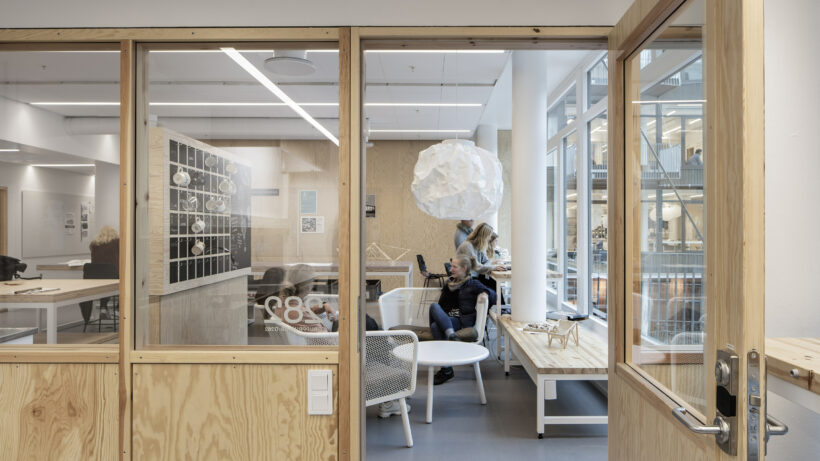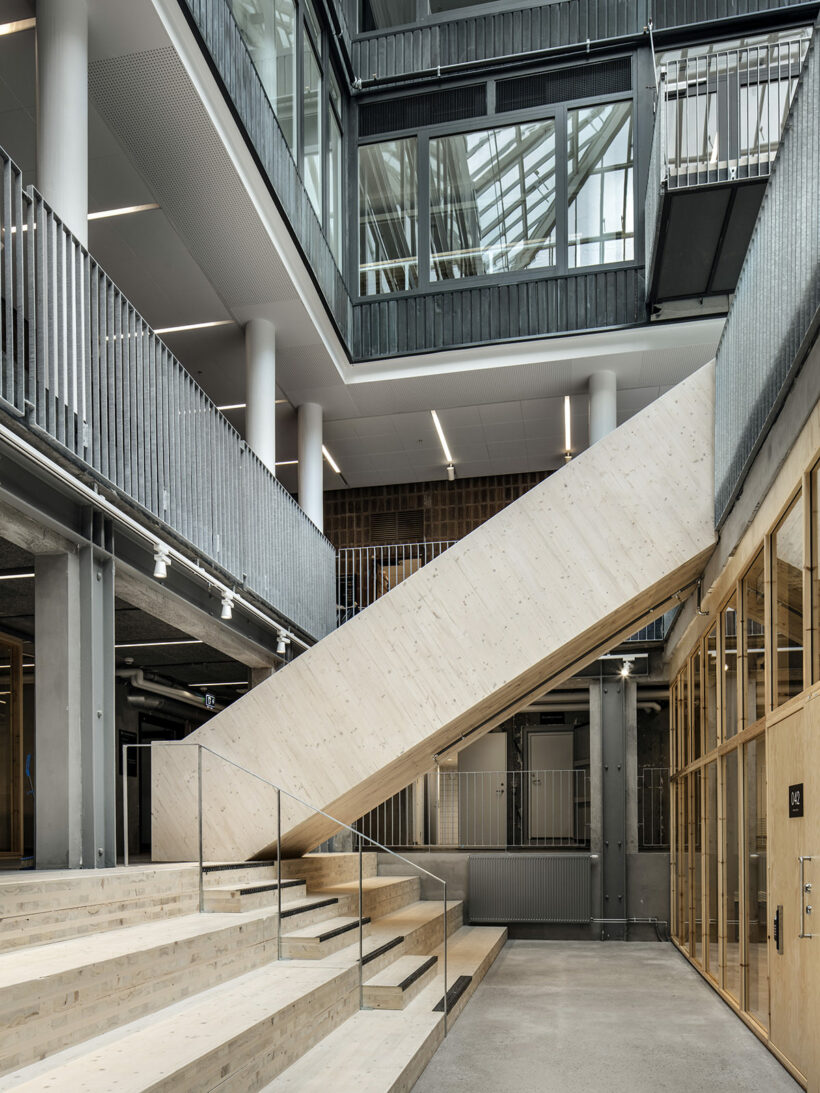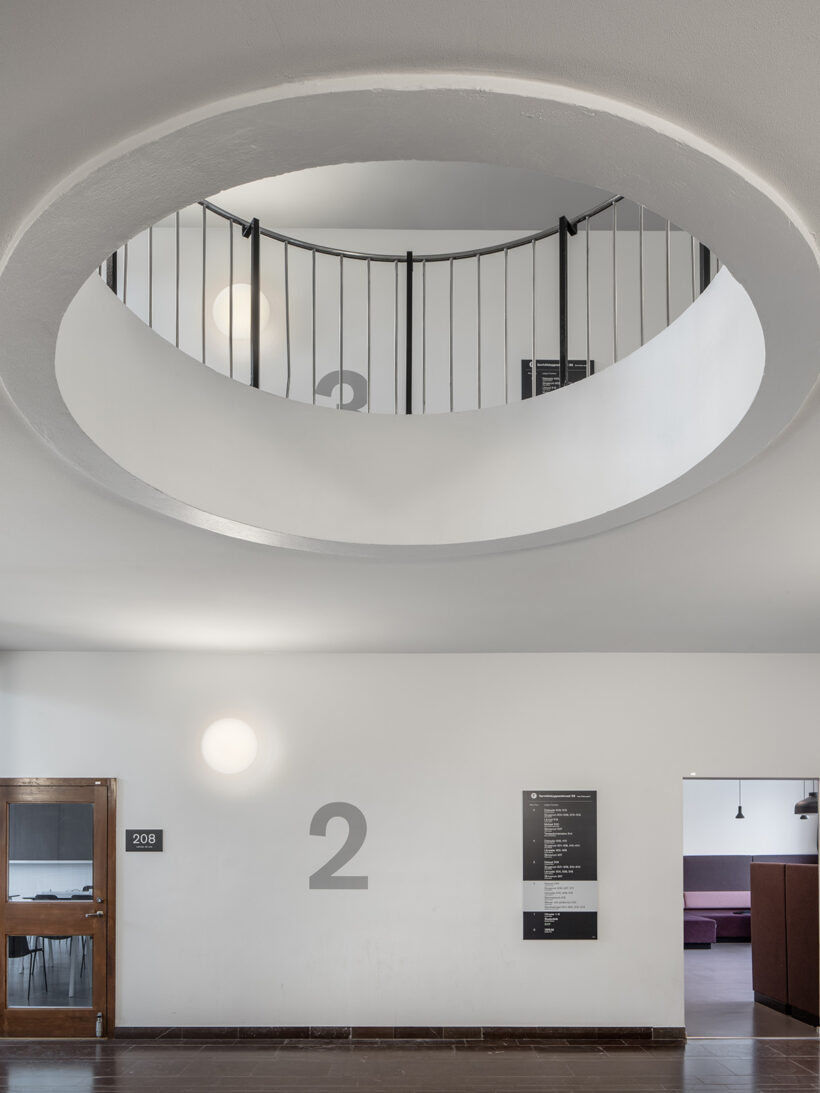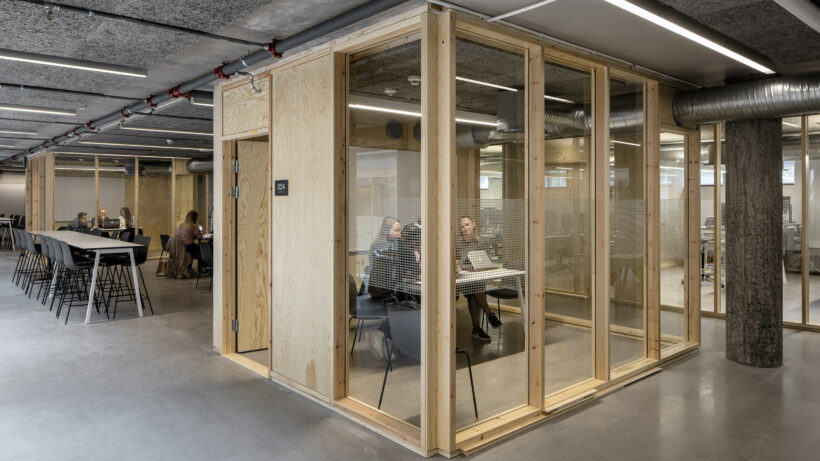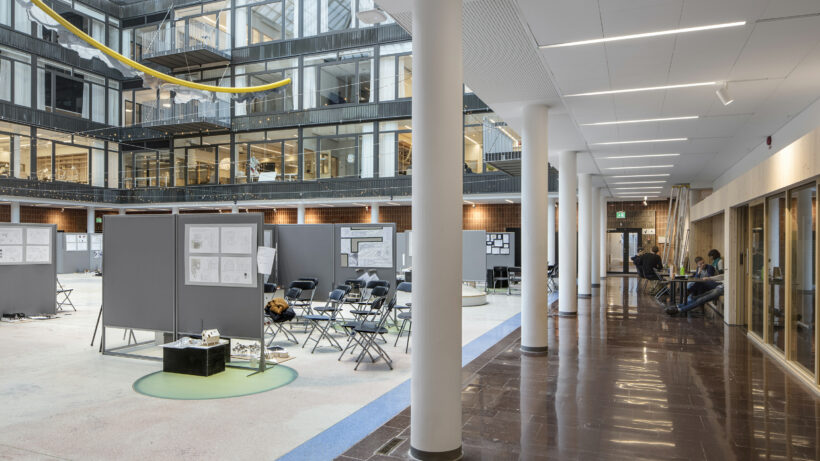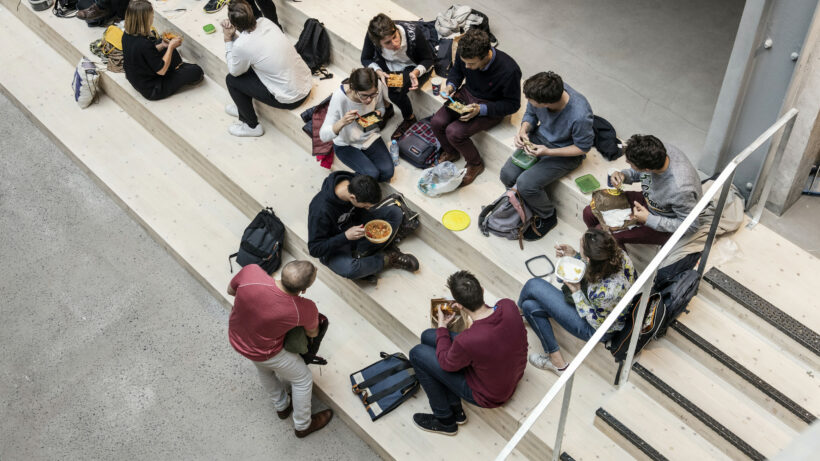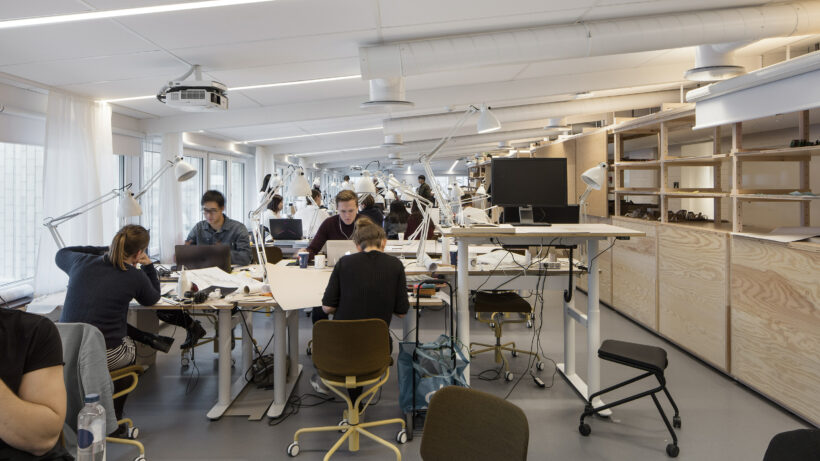The heart of the building
Merging the previously separate departments into a new Department of Architecture and Civil Engineering called for a redesign to create modern ways of working. The central idea has been to create more open spaces for people to meet and make the activity within the facility visible. The architects have focused on the interior; changing the building’s static and closed form has created greater mobility and more modern ways of working.
